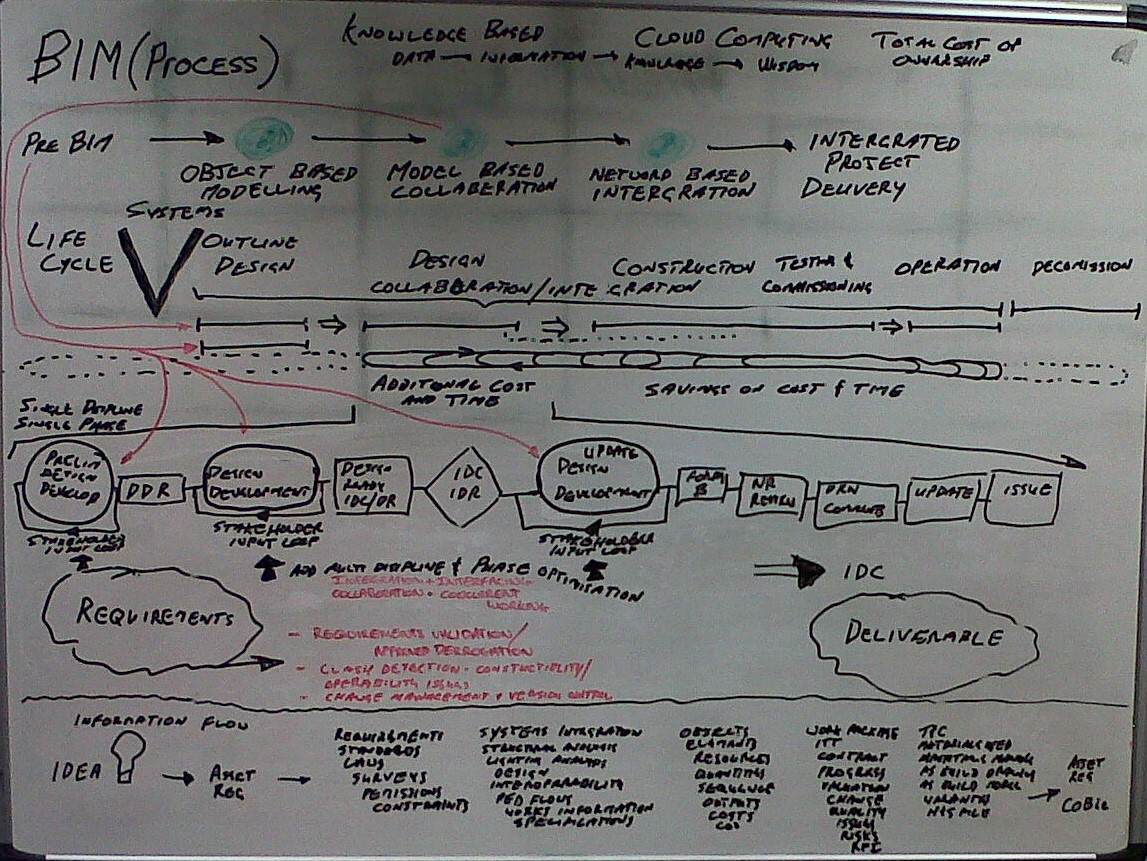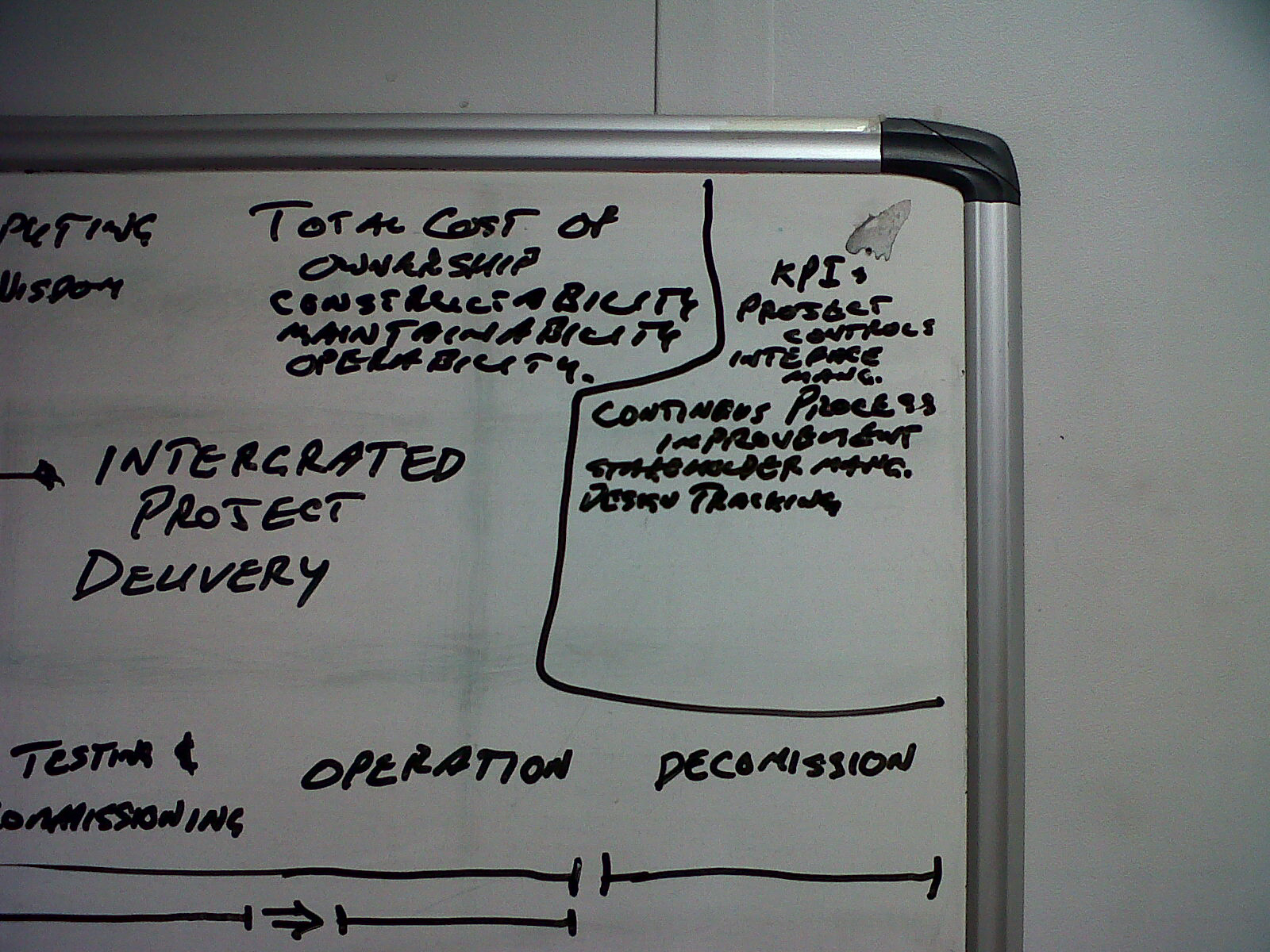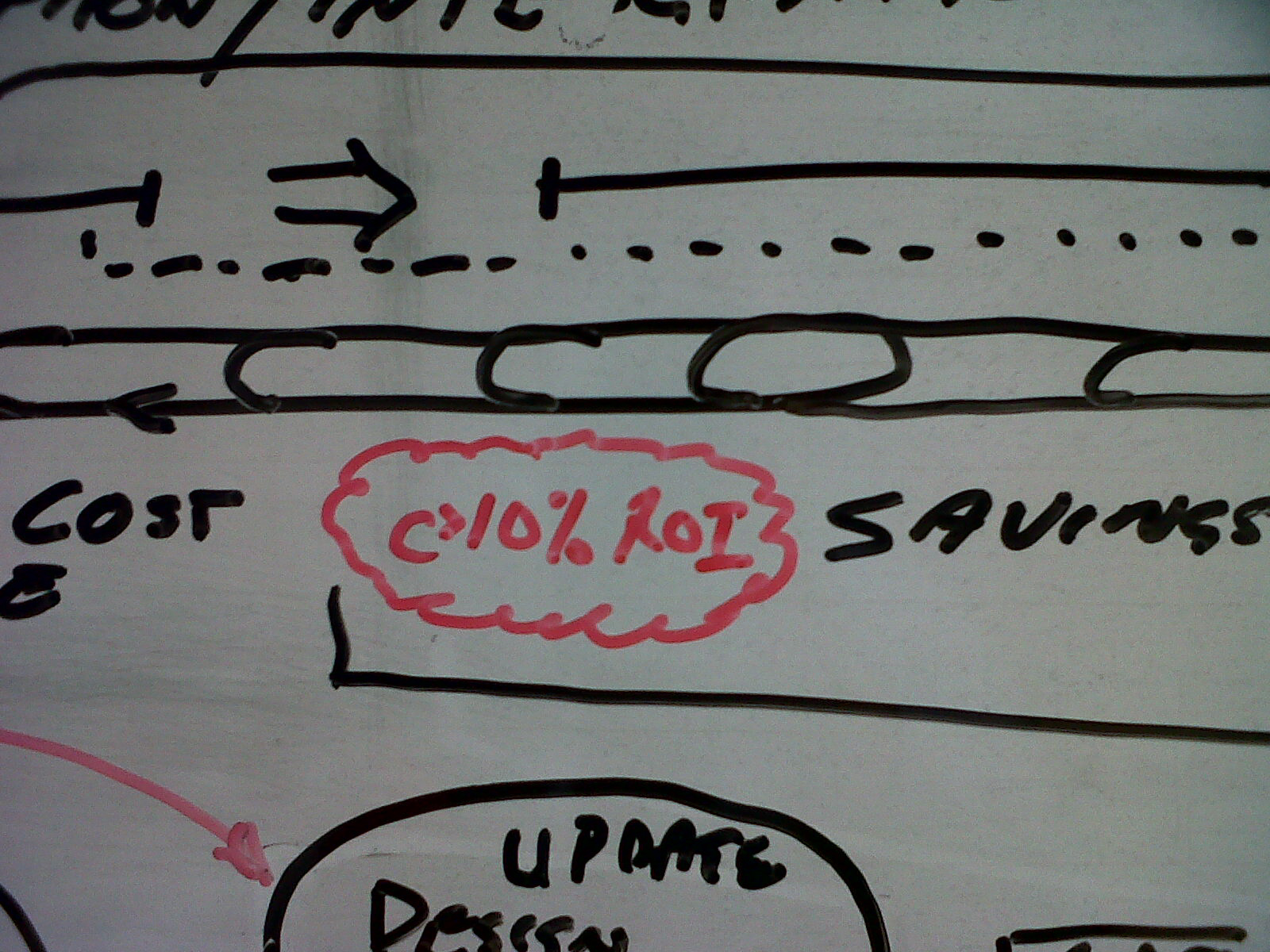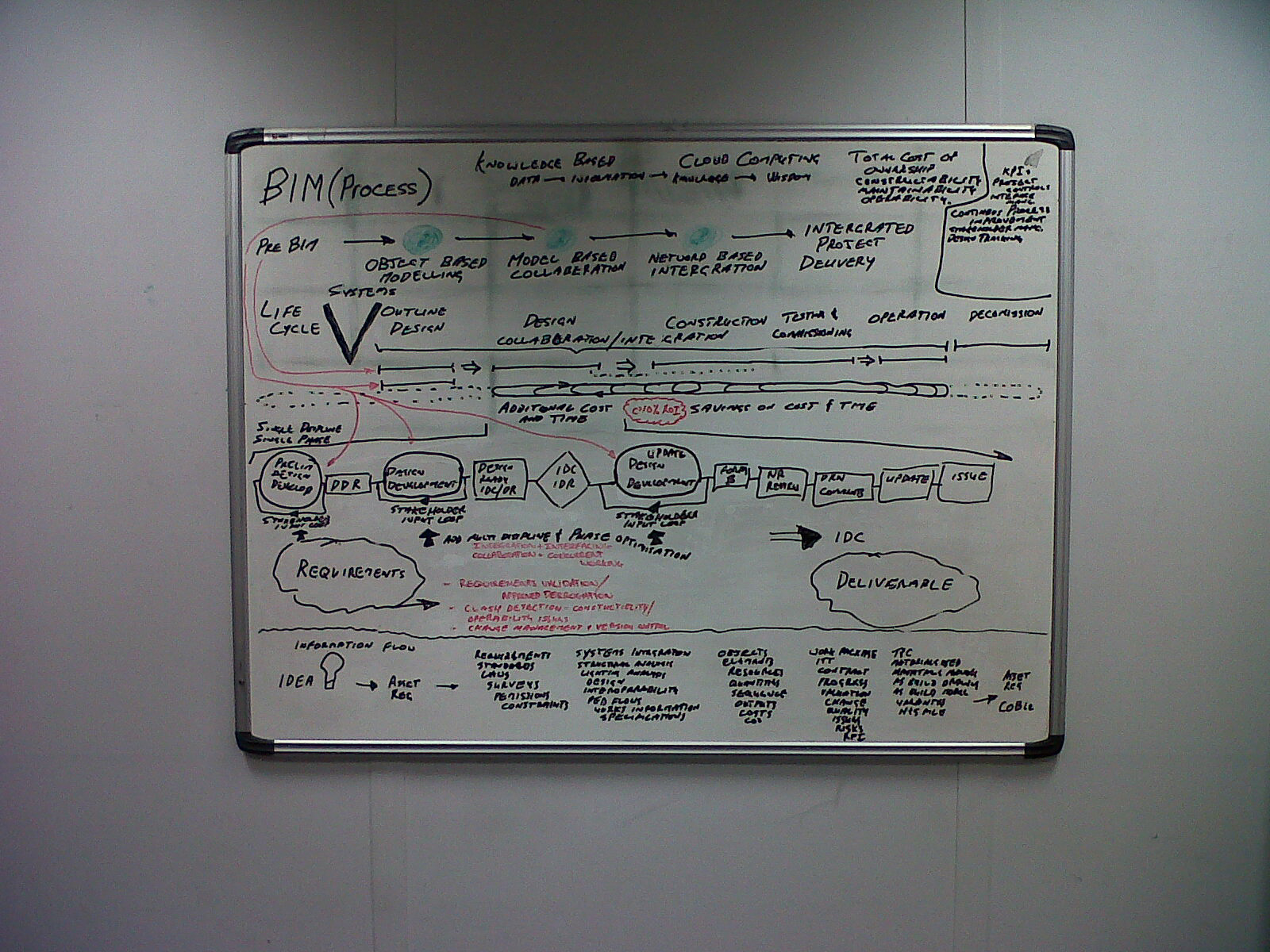BIM is most definitely a threat to business
[Posted in LinkedIn on November 27, 2014]
Rant over. Lets go back to the basics of BIM from my perspective. I was BIM Manager for Hyder Consulting on London Bridge Station Redevelopment in 2011 / 2012. Costain had just been awarded the project by Network Rail and the team was based in James Forbes House. Over the Christmas period I developed my thoughts on BIM and created the above whiteboard scrawlings. The photo was taken in the first week back in Jan 2012. The whiteboard was developed a little more after this photo. This was me trying to pull together my understanding of BIM and putting it 'out there' for others to see, comment, and understand. It did have some success in that department, not least of all because I noticed that there was the odd visitor, generally after work, when the office was quieter.
Almost three years latter the basic message is still the same. However, recently I was asked by a learned gentleman, how do you get the message across to a wider public. I already write articles for The Journal of the Chartered Institution of Civil Engineering Surveyors. The first of which was published in November 2012 under the title of Is BIM bigger that Latham? Information Flow, Management and Modelling - Part 1 The full text can be read by following the link. That does achieve a wider publication than a whiteboard on a single project and a few individual presentations. However, how many people read their professional Journal?
Perhaps LinkedIn is the answer. It is not as if I am alone in banging on about BIM. There is an ever growing BIM community discussing the issue, and of course there is all of the excellent work being done by the UK Government's BIM Task Group.
Who is listening, and is the message getting through? I recently read a article about BIM and the UK advertising slogan 'It does exactly what it says on the tin'. I thought it was a good article. BIM is definitely not what it says on the tin. It is not just about Buildings. Nor is it just about 3D models. It has a lot to do about information. At one time it was considered all about information, in a similar vain to Location, Location, Location. However, that is not quite true either. So it does not do what it says on the tin. It does so very much more, and has even more potential.
A recent LinkedIn post by [i]intelligentBIM led to a YouTube clip Implementing 5D BIM: a truly disruptive change. Whilst I am not sure about Estimating being an art form, a lot of the rest resonates, and is well worth 7mins of your time. There are a lot of other articles on LinkedIn about BIM. So it is reasonable to think that there is the beginning of a groundswell in BIM take up.
BIM needs to be understood for what it is by a wider audience than BIM experts and that should include senior management. Why should senior management get involved then. BIM is 70% about people, and therefore its implementation is about a cultural change programme. BIM is not just a new process, nor a new piece of software to be bought and taught. Senior management should be interested in any major threat to the business that they manage. It should be part of the core job description. BIM is most definitely a threat to business as we know it. It is a disruptive change. It is part of an knowledge revolution. The threat to a business from BIM is primarily to not know about BIM and how to implement it. The corporate risk manager should be jumping up and down at the board meetings demanding what is being done to reduce the impact of BIM and the knowledge revolution. The shareholders will want to know. How is the business to survive even, if it continues to fail to understand BIM and the ramifications of delaying a proper implementation strategy including a funded and well managed change programme driven from the very top of the business. Communication is key.
All of that before we get into the upcoming skills shortage, the reducing workbank of those companies that fail to embrace BIM, and the loss of additional profit.
Food for thought!
Photos expanded




Sorry, the hand writing is not very legible, especially towards the bottom. Accordingly, below is a transcript of the bottom image.
>>> Information Flow >>> >>> >>>> |
|||||||||
| Idea |
Asset Register |
Requirements | Systems Integration | Objects | Work Packages | Testing & Commissioning | CoBie |
Asset Register |
|
| Standards | Structural Analysis | Elements | ITT | Materials Used | |||||
|
Laws |
Lighting Analysis | Resources | Contract | Materials Manuals | |||||
| Surveys | Design | Quantities | Progress | As Built Drawing | |||||
| Permissions | Interoperability | Sequence | Valuation | As Built Model | |||||
| Constraints | Ped Flows | Outputs | Change | Validation | |||||
| Works Information | Costs | Quality | H & S File | ||||||
| Specifications | CO2 | Issues | |||||||
| Risks | |||||||||
| KPI | |||||||||


Additional Reading
PS. If a competitor is saving >10% more than you, and producing a better product with a more usable handover pack, which reduces the clients running costs over the full life of the product, then that is a threat to your business.

















